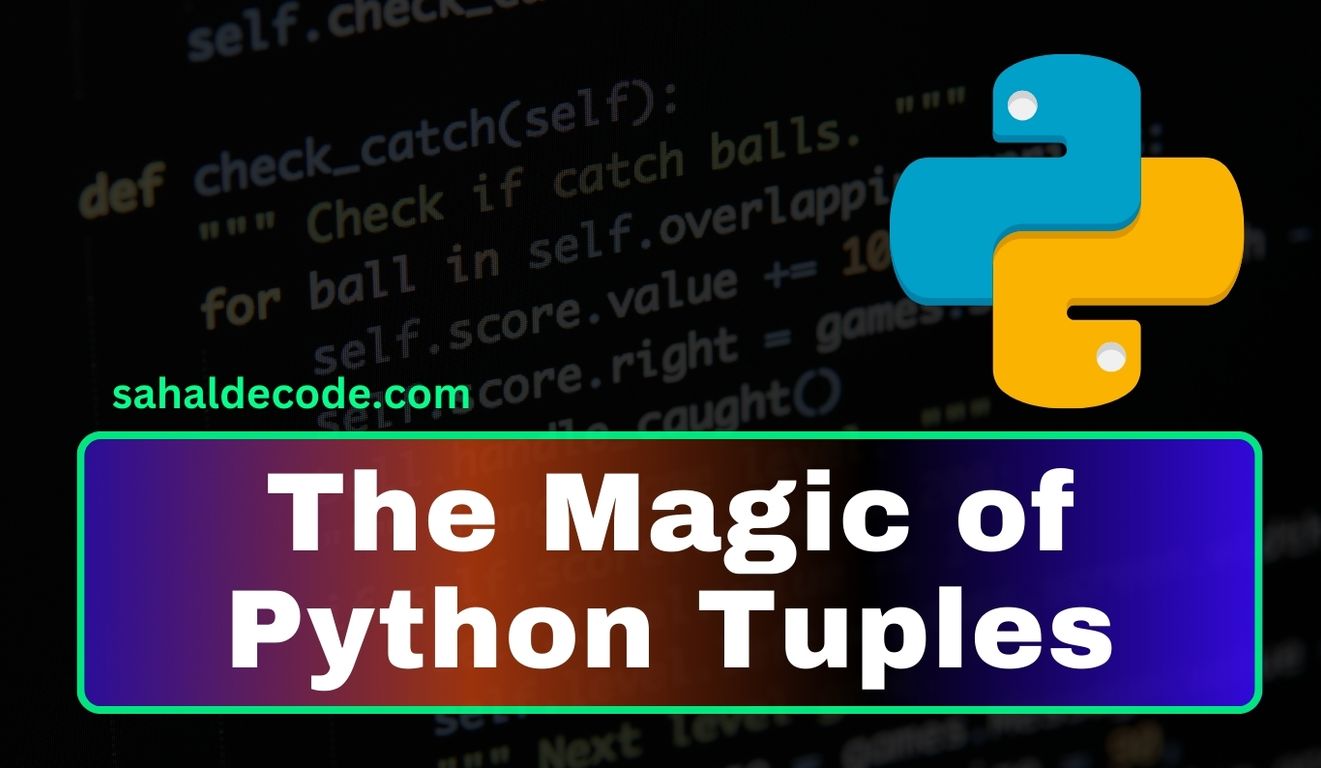Python, a programming language renowned for its simplicity and versatility, offers a wide array of data structures to accommodate various needs. Among these, Python tuples stand as a fundamental and often underappreciated component. In this comprehensive guide, we will delve deep into Python tuples, exploring their characteristics, and use cases, and providing practical examples.
Chapter 1: Understanding Python Tuples
What are Python Tuples?
Python tuples are ordered, immutable sequences used to store collections of items. Unlike lists, which are mutable, tuples are immutable, meaning their content cannot be altered once defined. This fundamental difference has important implications for their use in Python programming.
Tuples are used to store multiple items in a single variable.
Tuple is one of 4 built-in data types in Python used to store collections of data, the other 3 are List, Set, and Dictionary, all with different qualities and usage.
A tuple is a collection that is ordered and unchangeable.
Why Use Python Tuples?
Tuples offer several advantages, making them an essential tool in a programmer’s toolkit:
- Efficiency: Tuples are more memory-efficient than lists, making them a preferred choice for storing fixed data.
- Immutable: The immutability of tuples ensures data integrity, preventing accidental modification.
- Hashability: Tuples can be used as keys in dictionaries due to their hashable nature.
- Data Integrity: When you want to ensure the data remains unchanged, tuples provide a reliable option.
Tuple Items
Tuple items are ordered, unchangeable, and allow duplicate values. Tuple items are indexed, the first item has an index [0], the second item has an index [1] etc.
Ordered
When we say that tuples are ordered, it means that the items have a defined order, and that order will not change.
Unchangeable
Tuples are unchangeable, meaning that we cannot change, add, or remove items after the tuple has been created.
Types of Python List
Chapter 2: Working with Python Tuples
Creating Tuples
Creating a tuple in Python is straightforward. You enclose a sequence of elements within parentheses. For example:
my_tuple = (1, 2, 3, "Python")Accessing Tuple Elements
You can access tuple elements using indexing, similar to lists. For instance:
my_tuple = (1, 2, 3, "Python")
print(my_tuple[0])
# Output: 1Tuple Packing and Unpacking
Tuple packing involves assigning multiple values to a single tuple, while tuple unpacking assigns the values from a tuple to multiple variables. This feature makes tuples versatile and efficient.
coordinates = (3, 4)
x, y = coordinates
# Tuple unpackingChapter 3: Python Tuples in Real-World Scenarios
Use Cases for Tuples in Python
Tuples find applications in various scenarios, such as:
- Coordinates: Storing x and y coordinates in graphics programming.
- Database Records: Managing database records efficiently.
- Return Values: Returning multiple values from functions.
Practical Example: Tuples in a Student Database
student_database = [("Alice", 20), ("Bob", 22), ("Charlie", 19)]Chapter 4: Python Tuples Best Practices
When to Use Tuples vs. Lists
While both tuples and lists have their merits, it’s essential to choose the right one for your task. Tuples are ideal when:
- Data should not change.
- Data needs to be used as a dictionary key.
- You want to use data as function arguments.
Frequently Asked Questions
Can I modify a tuple in Python?
No, tuples are immutable in Python, meaning their content cannot be changed after creation.
How do I convert a list to a tuple?
You can convert a list to a tuple using the tuple() constructor.
What is the main difference between a tuple and a list?
The primary difference is that tuples are immutable, while lists are mutable.
Conclusion
Python tuples are a versatile and valuable data structure in the Python programming language. They offer immutability, efficiency, and hash ability, making them suitable for various use cases. By understanding when and how to use tuples, you can enhance your Python programming skills and create more robust applications.
In this guide, we’ve explored the fundamentals of tuples in Python, their advantages, practical examples, and best practices. Armed with this knowledge, you are well-equipped to harness the power of tuples in your Python projects. So, go ahead, experiment, and unlock the full potential of tuples in your coding adventures.
Happy coding!
Don’t forget to check out these external resources for further learning:
- Python Tuples Documentation
- Real Python – Python Tuple: A Guide to Create, Initialize, and Use
- GeeksforGeeks – Python Tuples
By following these guidelines and using Python tuples effectively, you’ll undoubtedly enhance your Python programming skills and develop more efficient and reliable code.










